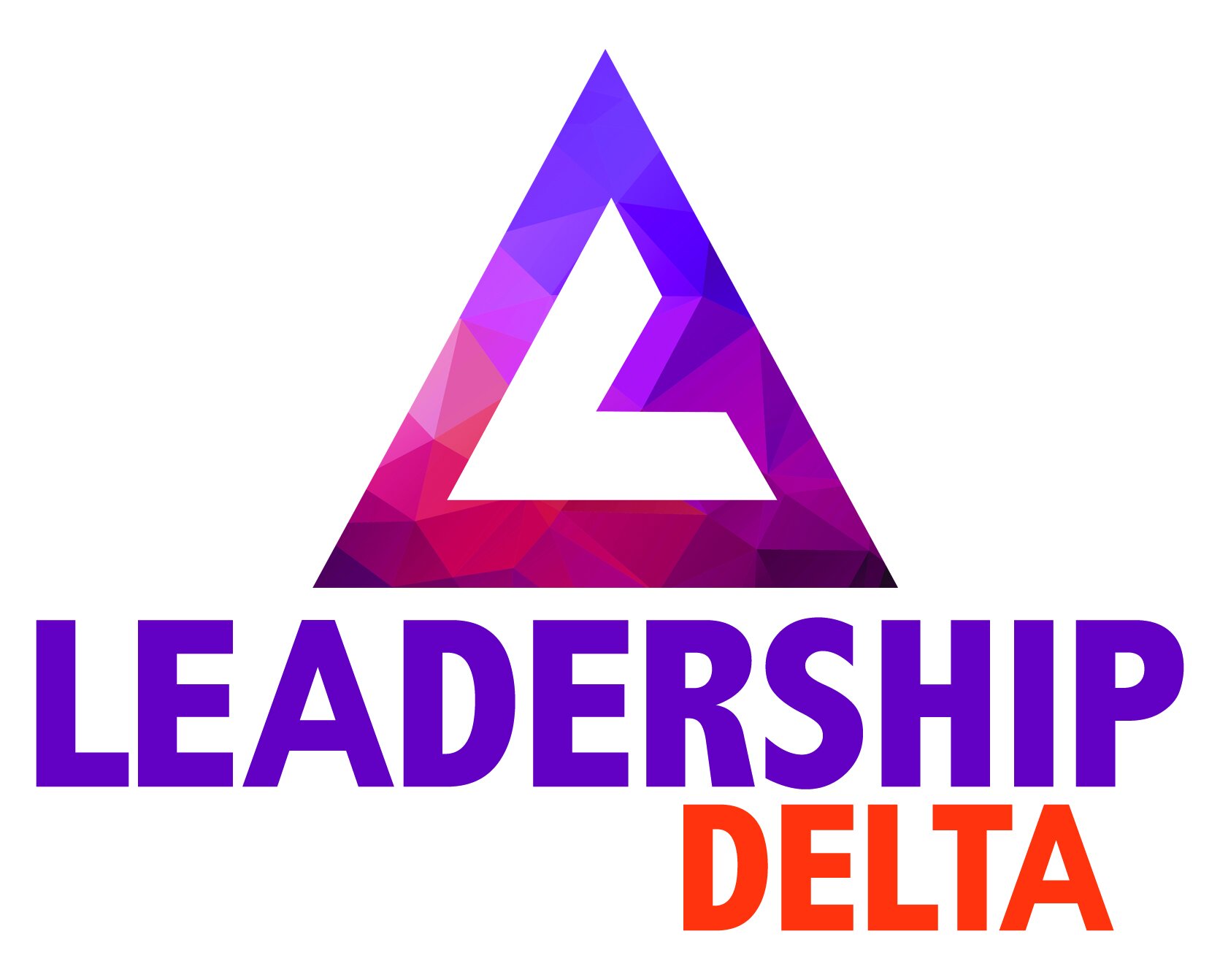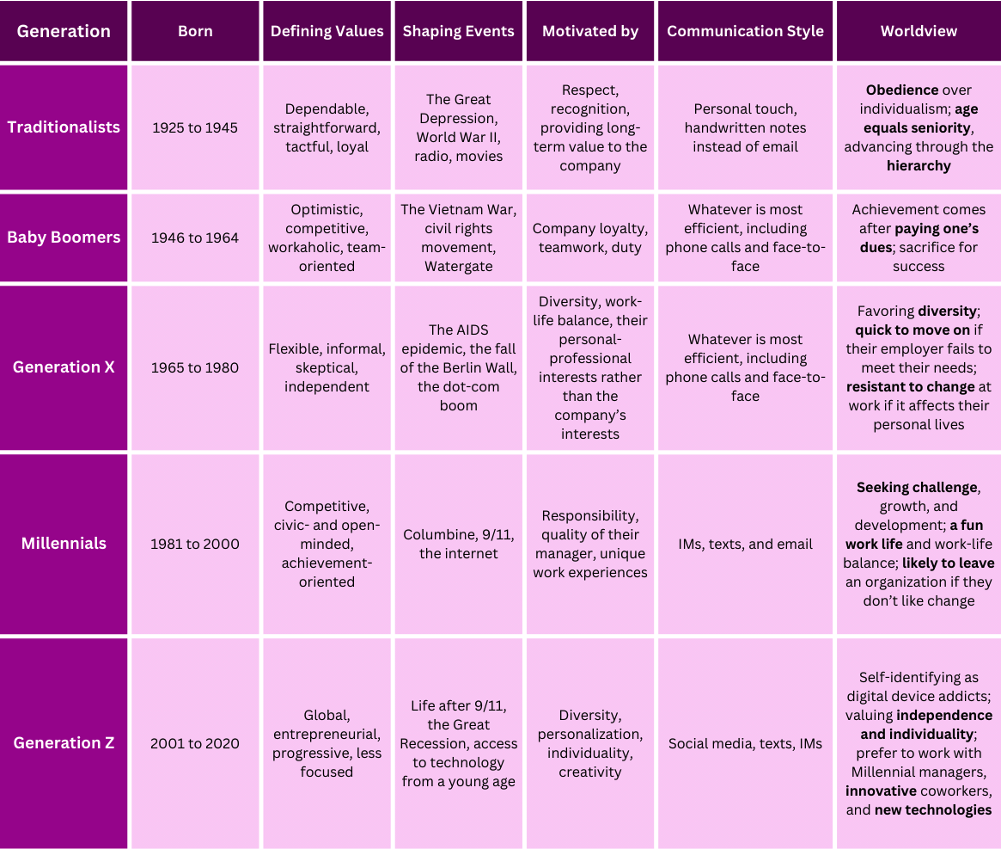You've got leadership style, but can you lead a multigenerational team?
“This dynamic bullpen accounts for 100 diverse years of opinions, values, ethics, and world events.”
What is a multigenerational workplace?
While it’s not an actual question on Jeopardy (your move, Ken Jennings), it is a big dilemma many organizations face: How to create a cohesive, multigenerational team.
Our current unique window of history includes five different generations represented in the workplace:
Traditionalists (1925-1945)
Baby Boomers (1946-1964)
Generation X (1965-1980)
Millennials (1981-2000)
Generation Z (2001-2020)
This is an unprecedented employee demographic, and effective leaders must learn how to build and manage their multigenerational teams by understanding the key differences between each generation: their defining values, impactful current events, motivation, communication styles, and worldviews.
Purdue University Global professor Bea Bourne is one of the leading experts on generational change and development whose research has given a holistic view to the generational divides among Americans today.
Bea Bourne’s research, illustrated in the above chart, aims to empower managers and HR executives to develop multigenerational strategies in recruitment, orientation, talent management, retention, and personal development.
In addition to this birds-eye view of generational divides, further research shows three of the biggest gaps between generations: individualism, technology, and mental health.
Generational divides
Jean M. Twenge is a psychology professor at San Diego State University (and– in case you’re curious– Gen-Xer) who has spent the majority of her career researching generational differences.
Her recent book. Generations: The Real Differences between Gen Z, Millennials, Gen X, Boomers and Silents– and What They Mean for America’s Future, takes a deep-dive approach, examining more than a dozen longitudinal studies highlighting differences between generations.
Below are three key pillars of change that have marked the biggest differences in the five generations, and what leaders need to know for leading and championing their multigenerational teams.
Individualism
One of the sweeping differences among all five living generations is their approach to individualism versus collectivism.
Collectivism is a culture with an emphasis on social rules and social harmony, with less emphasis on the self. Individualism is a culture that focuses more on the self, uniqueness, and the individual self.
Americans over the last half-century have gradually pulled away from a collectivist culture to embrace a more individualist culture, according to Jean Twenge and her team of researchers at San Diego State University.
In her book Generations, Twenge describes this transition to individualism reaching a fever pitch with what she describes as the Baby Boomers’ “Big Bang of modern individualism,” which has gained rapid momentum as it has reached the present day.
The increased emphasis on positive self-esteem gradually pulled focus away from the ideals of a collectivist culture and deeper into the realm of individualism.
What leaders should know: Younger generations prioritize independence and autonomy. Leaders who can accommodate a flexible work schedule, or prioritize a work-life blend may have greater success recruiting and retaining employees.
Technology
Technology, for better or for worse, is a driving factor of generational differences and is perhaps one that is most widely known and acknowledged. Social media is a complex part of the workplace that many employers have learned to navigate.
What leaders should know: Utilizing technology effectively can bridge generational gaps. Leaders who encourage collaborative tools and approaches that cater to various communication styles can ensure that all employees are comfortable and proficient in using them.
Mental Health
Research has shown that higher levels of individualism come with an increase in anxiety and depression, which gained momentum initially with Millennials. Large “shaping events” (impactful, oftentimes traumatic world events) are becoming more common, which also impact employee mental health.
What leaders should know: GenX, Millennials, and GenZ prioritize mental health and wellness. Understanding this data and approaching it with empathy will create a more understanding and compassionate work environment which can, in turn, translate to better retention, higher productivity, and an increase in employee satisfaction.
Play your strengths
Leaders who understand the unique strengths and preferences of each generation can create a robust, productive team. Empathy, flexibility and a commitment to continuous learning empower leaders to bridge the generational gap among employees.
For more information on how you can navigate this and other challenges as a leader, sign up for Leadership Delta’s Delta Academy.


